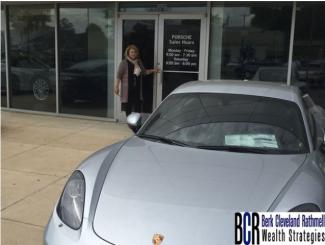
Purchase vs Lease
In 2013, over 31% of auto purchases were leases. We find that number surprisingly high, but it becomes a bit more understandable when you consider that the primary factor driving the choice to lease is the rising cost of new vehicles.
Many people want to drive a more expensive vehicle than they can afford to buy, so they turn to leasing because lease payments are lower than loan payments. This is because with a car loan, the consumer pays the full purchase price of the car, minus a down payment, over the term of the loan, which generally ranges from three to five years. In a lease, the purchaser only pays for the calculated depreciation of the vehicle over the term of the lease, which is usually two to four years, resulting in a lower monthly payment.
For example, on a car with a purchase price of $36,000, the estimated monthly payment on a three-year loan is $1,034 at 2.5% interest. The estimated monthly lease payment based on paying for $18,000 in depreciation at a higher interest rate of 6%, plus additional lease expenses, is $584.
This is a simplified explanation of why the lease payment is less than a loan payment for the same vehicle, but it doesn't show why the monthly payment is only part of the financial comparison.
Why lower monthly payments aren’t everything
Auto leases may be cheaper in the early years, but usually cost more in the long run. Both lease and loan payments include taxes, but the lease requires a sometimes substantial security deposit, as well as other fees which increase the cost to drive the car over the same period of time.
Lessees are subject to additional fees for above average wear and tear on the car, as well as an additional mileage fee – usually 15 cents per mile – for going over the limit of 12,000 miles per year. If you decide you want to get out of the lease before its term ends, there is a penalty for early termination that usually equals the amount owed on the remainder of the lease.
In addition, the purchaser owns the car at the end of a loan while the lessee must either lease or purchase another car. If you are one of those people who look forward to not having a car payment for a few years, then a lease is definitely not for you since with multiple leases, you will always have a car payment.
There are other factors not addressed in this post that should be considered before you make your final lease/purchase decision. You can find additional resources and calculators to help you make the decision with a simple google search. Don’t be afraid to compare; you may find additional benefits you never knew about.
If you're considering buying, see Marshall’s post on buying new vs. used.
-Sandra Cleveland-

